From action-adventure sports footage to commercial real-estate surveys, more and more people are taking advantage of today’s fast-evolving drone devices and technology. The problem for some, however, is that not all drone pilots are photography professionals, and therefore picking the best drone camera can pose a challenge.
For many uses, of course, cinematographic-level photography isn’t essential; instead, most people really only want to capture images at the same or similar quality and resolution as to what you might take on your smartphone.
That’s why you may be surprised to know that getting decent-quality footage from your drone’s camera could be cheaper than you think. Here are some details to get you started.
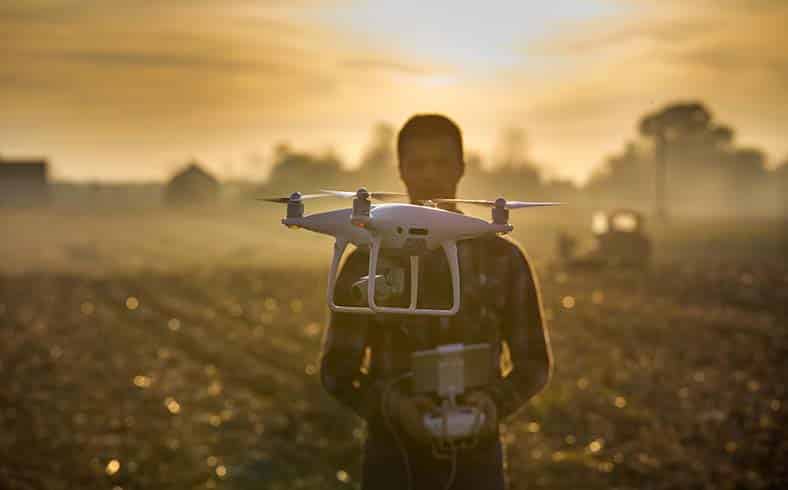
Aerial Photography: Back to Basics
At the end of the day, doing aerial photography is doing photography. The basic rules that govern the process for taking a great photo at the beach with your smartphone also govern the process by which you obtain a great shot from the air.
The essential components here are:
- Enough light;
- A camera with decent resolution;
- The opportunity to take a steady shot of whatever scene you want to capture.
Before the advent of today’s amazing drone technology, cinematographic productions might have used cranes, high buildings, helicopters, as well as planes for their aerial-photography needs. And while these techniques are all still in use today, most people can now deploy drones as a cheaper, easier and more flexible alternative.
There are many advantages to using drones for aerial photography, the most obvious being cost and risk avoidance. It is much more affordable to use a drone for aerial photography, while the chances of someone getting hurt are practically zero when compared to renting a crane or a helicopter.
Also, in terms of image quality, drones can get much closer to objects than other options, leading to a much more detailed image and more custom angles, which results in a more accurate shot of what the director of the scene wants to capture.
The challenge, however, is to get to an acceptable combination of light, camera resolution, and image stabilization from what’s essentially a flying camera. In order to achieve this, there are five factors to consider. And while each one is not necessarily difficult or expensive, these will point you in the direction to find the right gear to improve your photo quality.
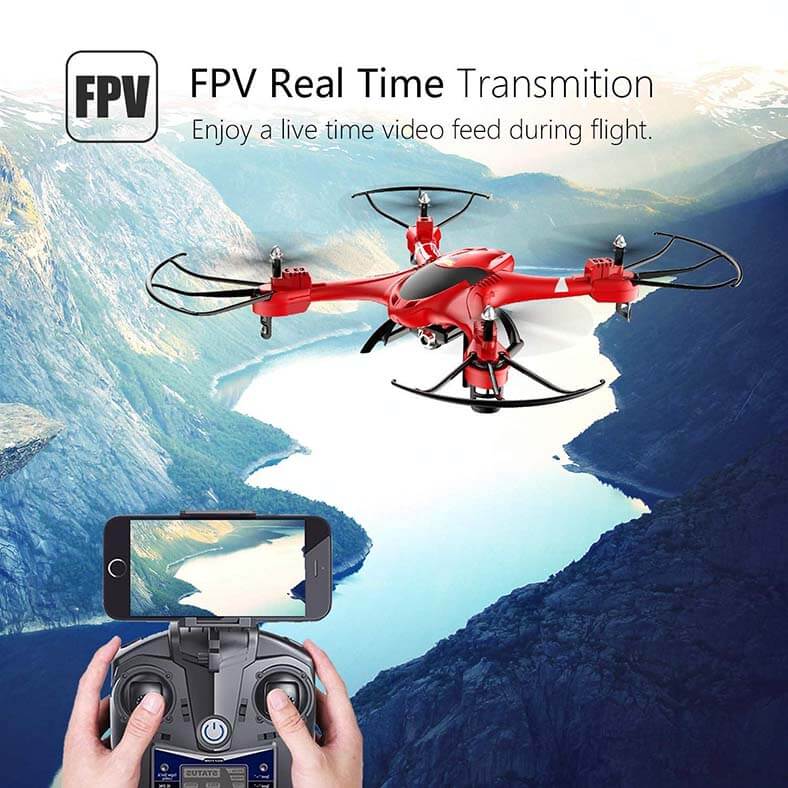
1. FPV (First-Person View)
All drone cameras capture footage from an overhead perspective, but some do it without live-streaming that footage to the pilot. Instead, they store this footage inside an SD card or some other type of memory. But depending on what you want to do with your drone, it’s important to know if the first-person view (FPV) feature is available in the model you want. And while FPV functionality is a commonly understood abbreviation among drone enthusiasts, in some cases manufacturers do not specifically state that their drones have a camera with FPV functionality. Instead, they may refer to a “WiFi camera.” This means the camera can live-stream footage to a remote pilot and essentially assures that FPV is available.
If a WiFi camera is for you, then you may be interested in a VR set as well. A VR set is simply a pair of goggles that are connected to the WiFi camera of the drone, so instead of live-streaming footage to a mobile device, the images are sent directly to the VR unit. Thus, the flight experience is more realistic and unique.
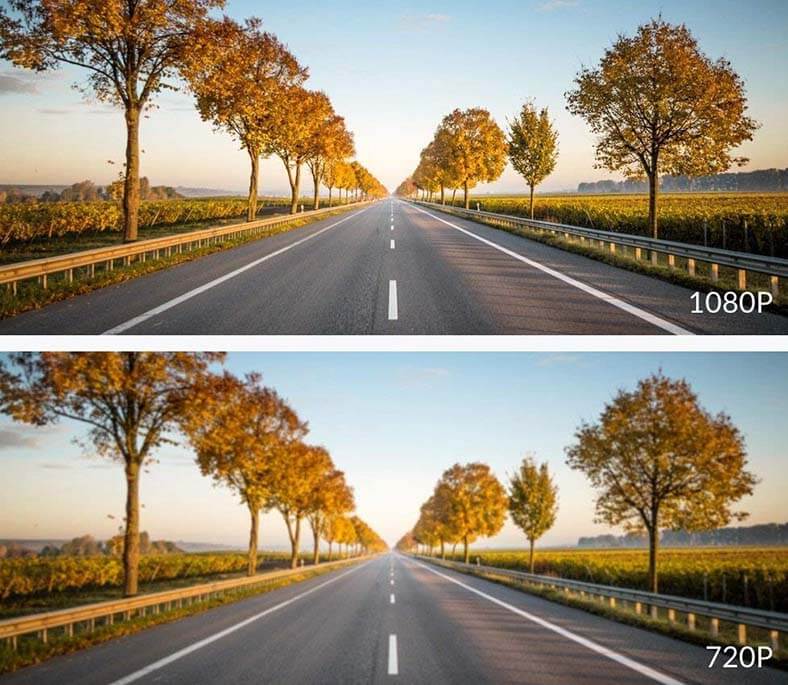
2. Image Resolution
Among the many factors that impact the quality of a photo, resolution is perhaps the most widely understood. In short, the higher the resolution, the better the image will look.
Simply stated, resolution is nothing more than the total number of pixels with which an image is compiled. The higher the resolution you have available, the more detailed the final image result.
As you grow in the hobby (if that is what you want) and advance to more specialized drones, the cameras can become more advanced along with the quality of the imagery. But even some low-budget drones can help you get great results with your aerial photography. (If you are interested in low-cost drones with great performance, here is my roundup of some of the best drones under $200.)
In general, look for a drone equipped with an HD (720p) camera. In fact, it’s even possible to find a drone with an FHD (1080p) camera for under $200, such as the highly-rated Potensic T25.
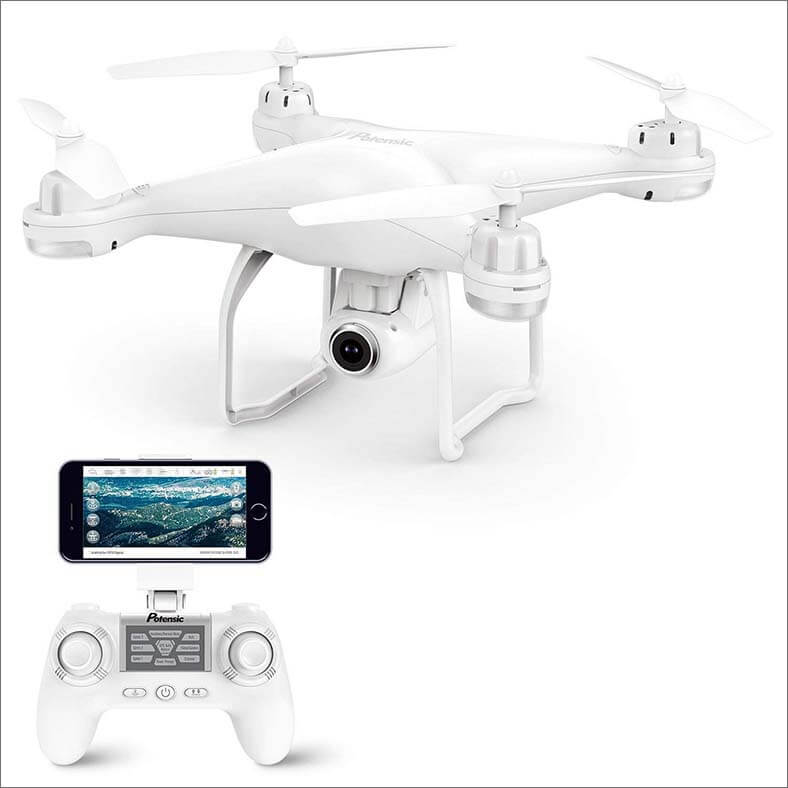
3. The Gimbal
While most people consider image quality and image resolution to be mutually dependent, your image quality will also depend on light levels and the steadiness of your camera.
With that in mind, one critical piece of equipment is the camera gimbal, which is the gadget that accounts for the fact your camera is flying through the air to offer device stabilization.
Having a camera in the air implies a few things. First, the wind. As the drone moves (and the camera with it), the wind will impact it and thus the camera will not be static. Additionally, the motors of the drone produce added vibration, which in turn will be transmitted to the on-board camera.
This makes it imperative to have some way to keep the camera static and vibration-free. In many cases, drones have the camera built inside their body, which is how images are captured as static as possible.
However, as devices start getting more advanced, cameras tend to be attached to the outside of the drone shell in order to offer a better perspective. Cameras that are fixed inside the drone, for example, can capture the propellers or other parts of the drone.
When the camera is on the outside of the drone, it’s held in place by a device called a gimbal. A gimbal works both as a shock absorber (for vibrations) and a tool to control the position and angle of the camera, making it possible for aerial photographers to capture almost any image from the air.
A gimbal is not present in all drones, and not all drones either need it or are compatible with one.
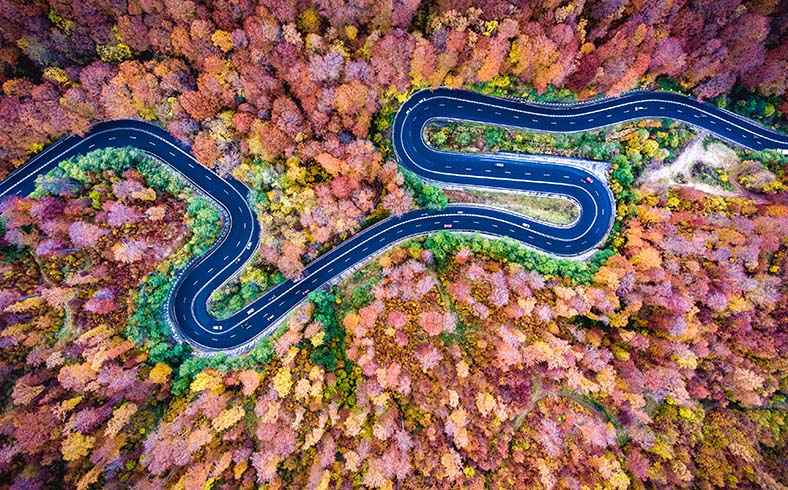
4. FOV Angle
The gimbal will control the position and the angle of your camera, an angle that is relative to position of the drone. The other angle with which you should also be familiar is the field of view angle, or FOV.
FOV matters because it’s an intrinsic feature to all cameras. Whether or not your drone camera requires a gimbal, all cameras have offer a certain FOV angle.
The FOV angle makes reference to the extent of the image the camera can capture; the wider the angle, the more image will be available to the drone’s sight (and to the pilot if the camera is WiFi enabled).
Most commercial drones have an FOV angle ranging from 90 to 120 degrees. For certain applications, a wider FOV is more desirable than a narrow one. For instance, when a drone is mapping a field of corn to help the farmer estimate yields, a wider FOV will enable the operator to complete the mapping in fewer passes.
Another example in favor of a wider FOV could be the case of capturing a wide-angle landscape as opposed to specific subject area. For the sake of reference, the FOV angle of the human eye is close to 180 degrees in most cases, which is a concept that is also popular in the design of video games.

5. WiFi Range
When cameras can live-stream video to a remote pilot, the distance for the FPV feature to work is finite. In most cases, the distance drones can travel is larger than the live-stream range.
For this reason, it is important to know how far the drone can fly while still transmitting back a live image.
For certain drone uses, FPV capability is key to making sure you’re capturing the images you need. If you are a realtor and want to capture all the beauty of that land you want to sell, knowing how far your drone can travel will be important to ensure you don’t waste time. Your drone’s WiFi range will go hand in hand with making sure your FPV flight experience is getting you the images you need.
Aerial photography is an extraordinary and fascinating field for professional pilots, and every year drones get into more specific types of aerial photography—from landscaping and construction site surveillance to groundbreaking exploration of all kinds. Hopefully the above tips will help you hone your aerial-photography skills and familiarity and take your drone photography to the next level!
